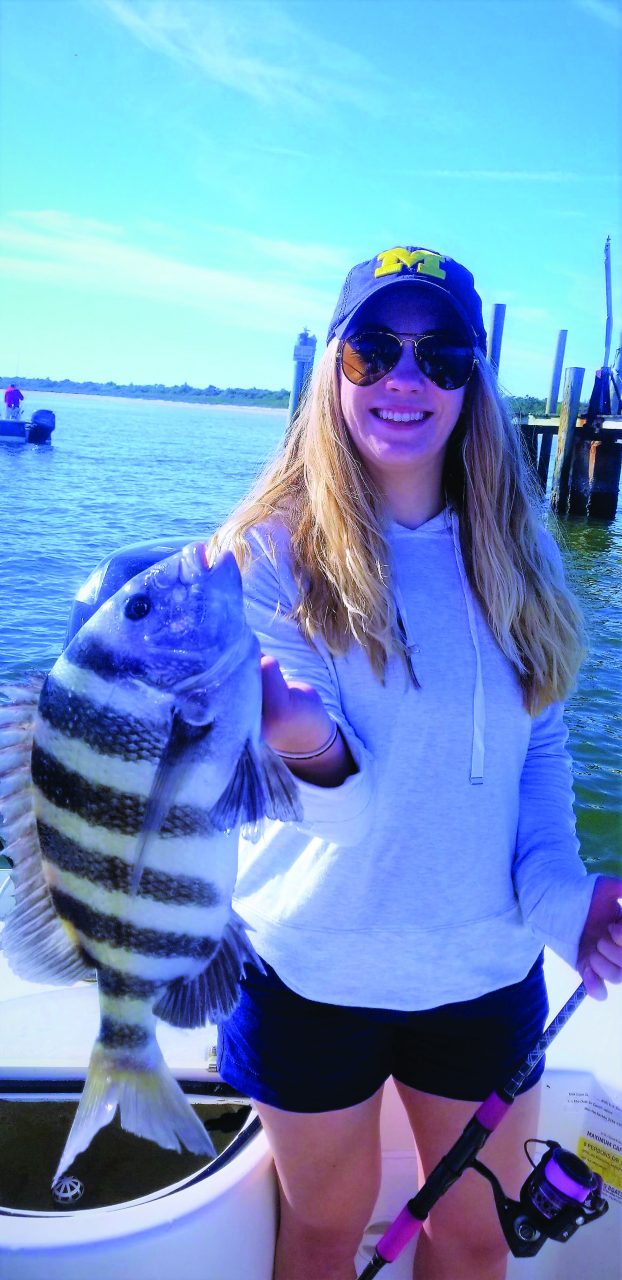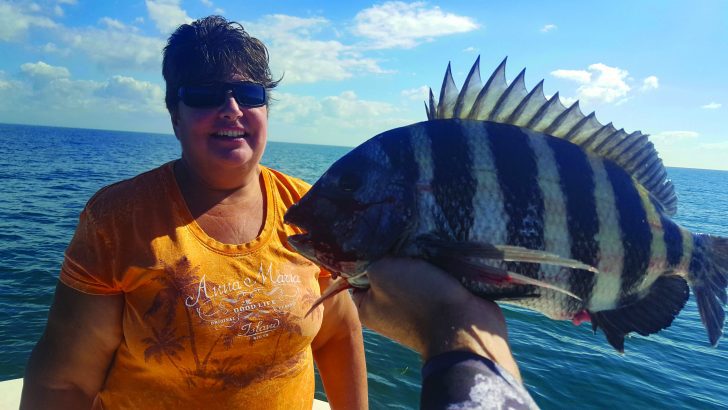Capt. James Vadas
Anna Maria Island is only 7 miles long by 2 miles wide. It’s just a sand bar compared to the 400 square miles of shallow water surrounding Tampa Bay, with an average depth of only 12’ and a network of deep channels providing a habitat for gag grouper. These channels have steep walls with lots of holes for gag grouper when the temperature starts to drop they become very active. The season runs from June to December with bag limit of 2 per person and they have to be longer than 24”. Keeper size gag grouper are mostly caught by trolling big lip diving lures such as Mann’s Stretch 25 or 30. The trick is to troll those lures in the 25’-30’ range at 5 miles per hour on the edges of the shipping channels without getting snagged on the rocks. When we keep catching them over and over in one spot, we can park the boat right over them and hold our position with the trolling motor. Then drop some live pinfish on a knocker rig. Or even free line a shiner. When gag grouper are feeding aggressive they will come up off the bottom and grab your bait, so be ready! These grouper will take your hook into a hole and cut your line on their sharp gill plate if you aren’t paying attention.

The “Convicts” are back. If you have been on a charter fishing boat or fished from a pier during the winter time in Florida you are likely to catch a “Convict” or “Sheepshead”. The “nickname” convict stems from stripes. Sheepshead have vertical black and white strips and they are good at stealing your bait right off the hook. God not only made these fish to taste delicious, he gave them teeth, and their teeth look human, almost like the fish is wearing a small pair of dentures. To keep them from stealing our bait I use .25 ounce jigheads to put my shrimp on, to catch the convicts. The length of the jig-head hook ends up behind their back row of molar teeth so they stay on the hook better than if you hook them in the lips. I also rip the shrimp in half and push the tail onto the hook of the jighead. I then throw the remaining heads and bodies of the shrimp in the water. It helps to stimulate feeding fish to chum the water with the pieces of shrimp. If shrimp are not available you can also use mud crabs, sand fleas, and oysters. Sheepshead love to eat crustaceans and to chew on the razor-sharp barnacles covering the docks and bridges. Good luck trying to keep a barnacle on your hook though! Tight lines and God bless.

